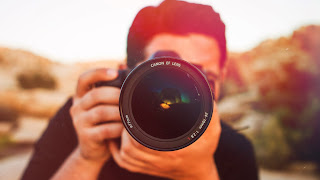Photography usually relies on light for quality photos, and it is scary for beginning photographers to take pictures after dark, but it can be done quite easily with practice.
Many incredible shots are missed when night falls, because you may feel more secure taking pictures only in daylight. With the basic knowledge of your camera, and a willingness to experiment, you can capture really unique and interesting photographs at night.
You can take good photo’s at night, using the basic knowledge of your camera’s controls and film speeds. You do not have to use a professional camera to take night photographs.
Any DSLR or SLR camera will work, and a camera with manual exposure mode is preferable, in order to self-adjust controls as necessary.
Night Photography Tips For Beginners
Many incredible shots are missed when night falls, because you may feel more secure taking pictures only in daylight. With the basic knowledge of your camera, and a willingness to experiment, you can capture really unique and interesting photographs at night.
You can take good photo’s at night, using the basic knowledge of your camera’s controls and film speeds. You do not have to use a professional camera to take night photographs.
Any DSLR or SLR camera will work, and a camera with manual exposure mode is preferable, in order to self-adjust controls as necessary.
Night Photography Tips For Beginners
- Use Camera with Manual Exposure Mode - You need to be in control of the aperture and shutter speed when taking photographs at night. As lighting changes from the sun setting, or from city lights, you need to be able to make adjustments for the most effective exposure.
- Flash - A flash is not necessary during nighttime photography, unless the subject is within a feet of you, the flash will only detract from the photo. While a flash can be used in certain instances to highlight certain parts of a structure, it will not give the same overall effect that manipulating aperture and shutter will give.
- Learn To Estimate Camera Settings - Night photography requires experimentation. Learning how to set aperture and shutter speed correctly for the best photo, takes practice. When you choose a subject take several pictures at several different settings, then you can observe the difference. Shutter speeds and film speeds will need to be slower in the nighttime, as opposed to daytime shooting.
- Beware of Blur - Because the shutter and film speeds are lower, any shaking of the camera can cause blurring of the picture. Tripods are used for this purpose, but you can also use the camera’s timer, or a cable release for picture shooting. Setting the camera down and setting the timer can be as effective as a tripod, if you do not have one available.
- The Best Results Are From Experimenting - Taking pictures of the stars, or making light paintings is exciting when you get the pictures to come out like you want them to. It is a good idea to experiment with different settings, and try different nighttime subjects. You do not have to settle for unnatural color balance if you learn how lighting and your camera controls work together.












